|
In her long career, which stretched over forty years and included the publication of more than forty books, Edith Wharton (1862-1937) portrayed a fascinating segment of the American experience.
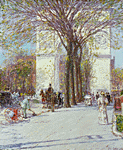 She was a born storyteller, whose novels are justly celebrated for their vivid settings, satiric wit, ironic style, and moral seriousness. Her characters, such as Ellen Olenska in The Age of Innocence, Ethan Fromme, and the charming but ineffectual Lily Bart in The House of Mirth, are some of the most memorable in American literature. Often portrayed as tragic victims of cruel social conventions, they are trapped in bad relationships or confining circumstances. Her own life stands as an example of the obstacles that a woman of her time and place had to overcome to find self-realization.
She was a born storyteller, whose novels are justly celebrated for their vivid settings, satiric wit, ironic style, and moral seriousness. Her characters, such as Ellen Olenska in The Age of Innocence, Ethan Fromme, and the charming but ineffectual Lily Bart in The House of Mirth, are some of the most memorable in American literature. Often portrayed as tragic victims of cruel social conventions, they are trapped in bad relationships or confining circumstances. Her own life stands as an example of the obstacles that a woman of her time and place had to overcome to find self-realization.
Edith Wharton's writing career was launched one hundred years ago, with the publication of her first book, The Decoration of Houses, written with her architect friend, Ogden Codman.
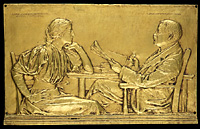 The two tastemakers denounced Victorian decorating practices--rooms heavily curtained and crammed with overstuffed furniture, "lambrequins, jardinières of artificial plants, wobbly velvet-covered tables littered with gewgaws, and festoons of lace on mantelpieces and dressing tables."
Instead, they proposed creating rooms based on simple, classical design principles, stressing symmetry, proportion, and balance in the architecture. The Decoration of Houses was an immediate success, and encouraged the emergence of professional decorators in the new style, such as Elsie de Wolfe. The two tastemakers denounced Victorian decorating practices--rooms heavily curtained and crammed with overstuffed furniture, "lambrequins, jardinières of artificial plants, wobbly velvet-covered tables littered with gewgaws, and festoons of lace on mantelpieces and dressing tables."
Instead, they proposed creating rooms based on simple, classical design principles, stressing symmetry, proportion, and balance in the architecture. The Decoration of Houses was an immediate success, and encouraged the emergence of professional decorators in the new style, such as Elsie de Wolfe.
Edith's parents, George Frederic and Lucretia Jones, were descendants of English and Dutch colonists who had made fortunes in shipping, banking, and real estate.
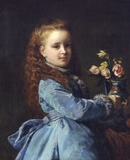 Edith Jones belonged to the small, most fashionable society of New York which lived on inherited wealth and were interrelated.
After a six-year sojourn of traveling and living in Europe with her family, she returned at
age ten to live on Twenty-third Street, near Fifth Avenue, in Manhattan.
She did not go to school, but educated herself by reading in her father's "gentleman's library," and was given lessons by a governess.
In 1885, when she was twenty-three, she married Edward ("Teddy") Robbins Wharton. He was attractive and kindly, a man of leisure from a similar social background and a good sportsman. However, he had none of her artistic or intellectual interests and their marriage was very unhappy.
Edith Jones belonged to the small, most fashionable society of New York which lived on inherited wealth and were interrelated.
After a six-year sojourn of traveling and living in Europe with her family, she returned at
age ten to live on Twenty-third Street, near Fifth Avenue, in Manhattan.
She did not go to school, but educated herself by reading in her father's "gentleman's library," and was given lessons by a governess.
In 1885, when she was twenty-three, she married Edward ("Teddy") Robbins Wharton. He was attractive and kindly, a man of leisure from a similar social background and a good sportsman. However, he had none of her artistic or intellectual interests and their marriage was very unhappy.
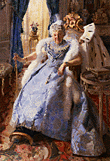 Edith Wharton was in an ideal position to view the social ambitions of the newly rich of the Gilded Age (the post-Civil War period of American expansion in business, foreign affairs, and the arts). Her world of old money looked down on the newcomers and their ostentatious display of wealth.
Wharton was both a participant of fashionable society and an observer of its kaleidoscopic changes in New York, in Newport (where she had summered in her childhood and had her own house after her marriage) and later in Lenox, Massachusetts, where she built her own country house, The Mount, in 1902.
Edith Wharton was in an ideal position to view the social ambitions of the newly rich of the Gilded Age (the post-Civil War period of American expansion in business, foreign affairs, and the arts). Her world of old money looked down on the newcomers and their ostentatious display of wealth.
Wharton was both a participant of fashionable society and an observer of its kaleidoscopic changes in New York, in Newport (where she had summered in her childhood and had her own house after her marriage) and later in Lenox, Massachusetts, where she built her own country house, The Mount, in 1902.
In her fiction, especially in The House of Mirth (1905), Wharton depicted the contemporary world of the very rich and its materialism.  The personalities were Wharton's fictional models--such as Mrs. William Astor, the famous social leader, or Cornelius Vanderbilt, the owner of The Breakers, one of Newport's palatial "cottages." The personalities were Wharton's fictional models--such as Mrs. William Astor, the famous social leader, or Cornelius Vanderbilt, the owner of The Breakers, one of Newport's palatial "cottages."
Edith Wharton herself was not content to be merely a society matron and hostess. From childhood, she showed that she was exceptionally bright and creative: even before she could read, she made up stories, and as an adolescent, wrote poetry and fiction, a novella titled Fast and Loose, precocious for a writer of fifteen.  As an adult she found writing difficult and did not publish her first book of fiction until she was thirty-six. The conflict she felt between the accepted role of a society matron and that of a professional writer caused her much anxiety, no doubt contributed to the depression for which she was treated in the 1890s.
A tonic for her depression was her yearly escape to France and Italy which inspired her to write about art, architecture, and gardens. The Americans she met abroad provided the raw material for her fiction on the international theme, as in Madame de Treymes, The Custom of the Country, and The Reef. As an adult she found writing difficult and did not publish her first book of fiction until she was thirty-six. The conflict she felt between the accepted role of a society matron and that of a professional writer caused her much anxiety, no doubt contributed to the depression for which she was treated in the 1890s.
A tonic for her depression was her yearly escape to France and Italy which inspired her to write about art, architecture, and gardens. The Americans she met abroad provided the raw material for her fiction on the international theme, as in Madame de Treymes, The Custom of the Country, and The Reef.
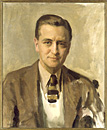 Wharton eventually settled permanently in France--first in Paris, in the historic Faubourg Saint-Germain, where she had begun spending winters in 1907--and later in its outskirts. She loved Paris: "the tranquil majesty of the architectural lines, the wonderful blurred winter lights, the long lines of lamps garlanding the quays--je l'ai dans mon sang [it is in my blood!]." In Paris in 1908 she began an affair with Morton Fullerton, a journalist on the London Times and a friend of Henry James's. Wharton's diary reveals her joy in their passionate lovemaking and in the intellectual communion she felt with him, all of which had been so painfully missing in her marriage. (She divorced Teddy Wharton in 1913.)
Wharton eventually settled permanently in France--first in Paris, in the historic Faubourg Saint-Germain, where she had begun spending winters in 1907--and later in its outskirts. She loved Paris: "the tranquil majesty of the architectural lines, the wonderful blurred winter lights, the long lines of lamps garlanding the quays--je l'ai dans mon sang [it is in my blood!]." In Paris in 1908 she began an affair with Morton Fullerton, a journalist on the London Times and a friend of Henry James's. Wharton's diary reveals her joy in their passionate lovemaking and in the intellectual communion she felt with him, all of which had been so painfully missing in her marriage. (She divorced Teddy Wharton in 1913.)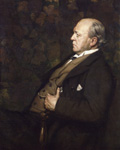 In Paris she found intellectual companionship in circles where artists and writers mingled with the rich and well-born, and where women played a major role. She met such French writers and artists as Paul Bourget, Jacques-Émile Blanche, Anna de Noailles, André Gide, and Jean Cocteau. In Paris she also enjoyed the company of visiting Americans, such as Henry Adams, Henry James, and Theodore Roosevelt, as well as art patrons Alice Garrett and Mrs. Potter Palmer and expatriate artists Walter Gay and Ralph Curtis.
In Paris she found intellectual companionship in circles where artists and writers mingled with the rich and well-born, and where women played a major role. She met such French writers and artists as Paul Bourget, Jacques-Émile Blanche, Anna de Noailles, André Gide, and Jean Cocteau. In Paris she also enjoyed the company of visiting Americans, such as Henry Adams, Henry James, and Theodore Roosevelt, as well as art patrons Alice Garrett and Mrs. Potter Palmer and expatriate artists Walter Gay and Ralph Curtis.
During World War I she became fiercely dedicated to the Allied cause. She led the committee to aid refugees from northeastern France and Belgium, and created hostels and schools for them. She helped establish workrooms to employ women who had no means of support and raised funds for these projects. Traveling to the front lines to observe the fighting, Wharton wrote reports for publication in America and urged the United States to join the war effort.
Her last years were spent in two beautiful houses in France, the summers at Pavillon Colombe, in a small village just north of Paris, and the winters at Château Sainte-Claire at Hyères, that was perched overlooking the Mediterranean. In these years she enjoyed the extended stays of friends such as Bernard Berenson and Kenneth Clark. She continued her daily writing schedule; since 1902 she had produced about a volume a year. She continued to travel and became increasingly attached to her gardens, which she designed herself.
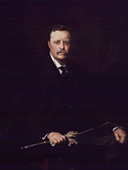 These last years brought great rewards, as Wharton was the grande dame of American letters, visited by many. She received the Pulitzer Prize in 1921 for The Age of Innocence, and an honorary degree from Yale in 1923. She crossed the ocean for the last time to receive it.
Wharton died in France in 1937. The social and material world in which she lived, and which she depicted in her fiction, has all but vanished, but numerous art objects and literary artifacts have survived. More than one hundred of these have been assembled in the exhibition to bring to life her remarkable personality and the milieu of her cosmopolitan society. The portraits of people and places evoke her world, recovering for us a civilization that even then was passing away, and commemorate Edith Wharton's lasting achievements.
These last years brought great rewards, as Wharton was the grande dame of American letters, visited by many. She received the Pulitzer Prize in 1921 for The Age of Innocence, and an honorary degree from Yale in 1923. She crossed the ocean for the last time to receive it.
Wharton died in France in 1937. The social and material world in which she lived, and which she depicted in her fiction, has all but vanished, but numerous art objects and literary artifacts have survived. More than one hundred of these have been assembled in the exhibition to bring to life her remarkable personality and the milieu of her cosmopolitan society. The portraits of people and places evoke her world, recovering for us a civilization that even then was passing away, and commemorate Edith Wharton's lasting achievements.
Eleanor Dwight
Viola Hopkins Winner
Guest Curators
Support for this exhibition has been provided by The Citibank Private Bank, Charlotte Throne Bordeaux, Dr. Thomas H. Maren, and the Smithsonian Institution
Special Exhibition Fund. In-kind support was provided by Schumacher and House Beautiful magazine.
Washington Arch, Spring/Childe Hassam
William Dean Howells with his daughter Mildred/Augustus Saint-Gaudens
Edith Jones (at age five)/Edward Harrison May
The Comtesse de Trobriand/Frederick MacMonnies
Edith Jones at age nineteen/Edward Harrison May
Consuelo Vanderbilt/Paul Helleu
F. Scott Fitzgerald/David Silvette
Henry James/Jacques-Émile Blanche
Theodore Roosevelt/ Adrian Lamb after the 1908 original by Philip de Laszlo
Mary Leiter Curzon/Franz von Lenbach
Richard Watson Gilder/Cecilia Beaux
John Jay Chapman/William Collins
August Belmont/John Quincy Adams Ward
Sinclair Lewis/John Quincy Adams Ward
|









